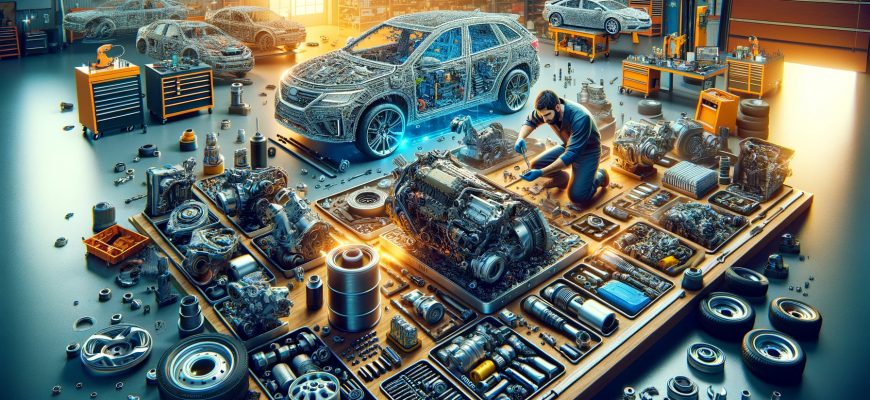
Navigating the World of Aftermarket Parts in Collision Repair
Navigating the World of Aftermarket Parts in Collision Repair
When a vehicle undergoes collision repair in Australia, one of the pivotal decisions involves the choice between Original Equipment Manufacturer (OEM) parts and aftermarket parts. Understanding the nuances of aftermarket parts is essential not only for automotive professionals but also for car owners who seek to make informed decisions about their vehicle repairs.
Understanding Aftermarket Parts
Aftermarket parts are replacement components that are not sourced from the vehicle’s original manufacturer. These parts are usually produced by third-party companies and are designed to function the same as, or similar to, OEM parts. They are prevalent in the Australian automotive repair market due to their cost-effectiveness and availability. However, the quality and performance of these parts can vary significantly, which is a crucial consideration for both safety and vehicle integrity.
Benefits and Drawbacks of Aftermarket Parts
The primary advantage of aftermarket parts is cost-effectiveness. They are generally less expensive than OEM parts, often making them a go-to choice for insurance companies and car owners looking to save on repair costs. Furthermore, aftermarket parts can reduce the total time a car spends in the shop because they are more readily available than OEM parts, which sometimes need to be ordered directly from the manufacturer.
However, the drawbacks of aftermarket parts are notable. There can be significant variability in the quality and fit of these parts, which can affect the vehicle’s safety and functionality. For instance, the Insurance Institute for Highway Safety has shown that while some aftermarket parts perform comparably to OEM parts, others may not meet these standards, potentially compromising vehicle safety.
Regulatory and Industry Standards
In Australia, the use of aftermarket parts in collision repairs is subject to specific regulations that ensure safety and performance standards are met. The Australian Automotive Aftermarket Association (AAAA) provides guidance and advocacy for standards in the automotive repair industry, ensuring that aftermarket parts are reliable and safe to use (AAAA).
Furthermore, certifications such as those from the Certified Automotive Parts Association (CAPA) play a crucial role in bolstering consumer confidence. CAPA-certified parts have undergone rigorous testing to meet industry standards for fit, form, and function, and are considered a safe choice comparable to OEM parts.
Choosing the Right Parts: A Guide for Repair Shops
For repair shops, making the right choice between OEM and aftermarket parts involves several considerations:
- Quality Assurance: It’s crucial to source aftermarket parts from reputable suppliers who offer guarantees on their parts. This ensures that the parts are reliable and will not adversely affect the vehicle’s performance.
- Certifications: Opting for parts that are CAPA certified or have other reputable endorsements can help ensure that aftermarket parts will perform well and meet safety standards.
- Technology and Information Access: Utilizing up-to-date digital platforms and databases like the SUN Collision Repair Information system can help shops access the latest OEM information and repair procedures, ensuring repairs are done correctly.
Conclusion
Choosing between OEM and aftermarket parts involves balancing cost, quality, and safety. While aftermarket parts offer a cost-effective solution, it is vital to ensure they do not compromise on quality or safety. By staying informed and adhering to industry standards, both repair shops and vehicle owners can make decisions that ensure the safety and longevity of their vehicles.
Navigating the world of aftermarket parts in collision repair requires knowledge and vigilance to ensure that every vehicle is restored to its pre-accident condition, safeguarding the performance and safety of the vehicle for its users.
READ MORE:
- Enhancing Your Car’s Longevity with Quality Collision Repairs: A Guide for Australians – This post discusses how quality collision repairs can extend the lifespan of a vehicle, emphasizing the importance of choosing the right parts and repair practices.
- The Dos and Don’ts After a Collision: A Guide for Adelaide Drivers – Provides guidance on what drivers should and shouldn’t do following a collision, including how to choose repair services and parts.
- Tips for Eco-Friendly Car Care and Collision Repair – Offers advice on maintaining your car and handling collision repairs in an environmentally friendly way, potentially touching on the types of parts used.
- The Importance of Colour Matching in Auto Body Repair – Focuses on the aesthetic aspects of collision repair, which is crucial when using aftermarket parts to ensure they match the original vehicle’s appearance.
- How to Protect Your Car’s Value with Professional Collision Repair – Discusses how professional repairs using the right parts can maintain or enhance the resale value of a car.

